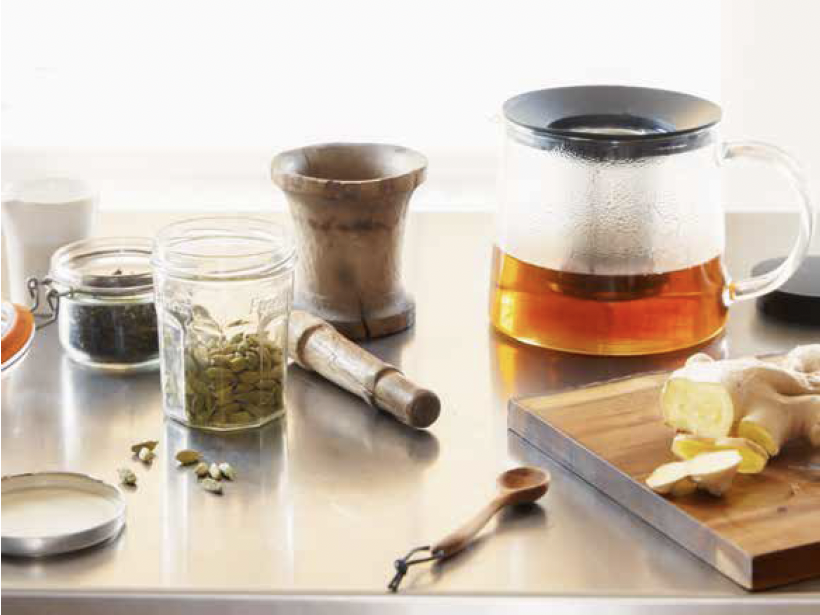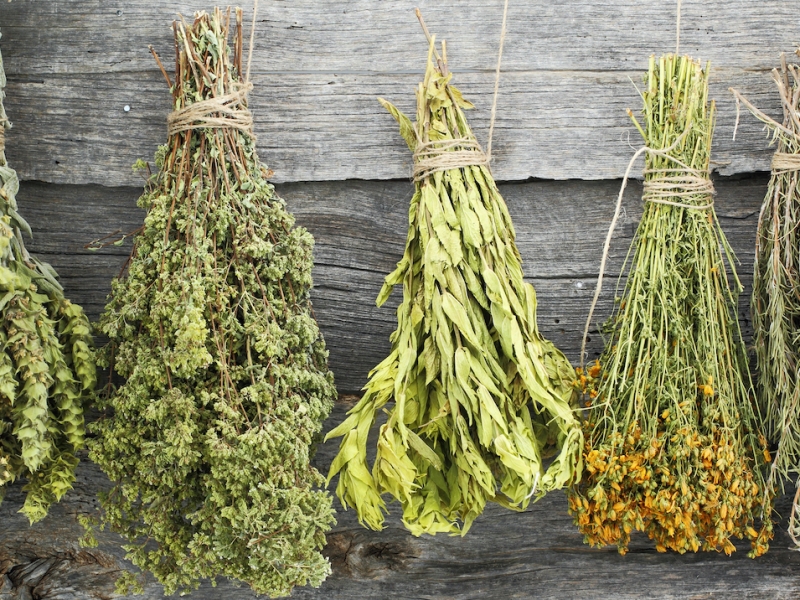The art of making herbal tea
Just as selecting incredible organic herbs is important for a great cup of tea, so are the minute details such as the amount of herbs in each cup, the shape and size of the herbs, the infusion time, the quality of water, the water temperature, the teapot, the cup……the company. Below we take you through the art of making herbal tea.
How much herb should you use?
How much you should have, of what and when, is the perennial question? Whilst there are some minimum amounts needed to get a suitable flavour and effect there are also maximum recommended amounts for some herbs so they are not too strong. Please see the specific information on each herb. You won’t go too far wrong with this rule:
- As a daily drink: 1-5g 3x/day
- For stronger therapeutic benefits: 5-10g 3x/day

What shape and size should the herbs be?
Finely cut herbs infuse more quickly, larger cut herbs more slowly. Hard herbs, like roots and barks, need to be finely cut if you want them as an infusion. If they are larger pieces you will need to decoct (simmer) them. Soft herbs should usually just be infused and only ever be decocted for short periods of time with a covered lid. Finely cut leaves and flowers lose their potency more quickly and so must be stored in an airtight container.
How long should I infuse my herbs for?
Delicate aromatic flowers, leaves and seeds generally need less infusion time of around 10 minutes. Though for stronger nourishing teas with plants like nettle leaf or oatstraw, this may be for 4-8 hours. Harder fruits, roots and barks need longer infusion times: 10—20 minutes and many will be best decocted.
Water and how you boil it
Later for the best herbal tea should be fresh, pure, clear, odourless and low in minerals. It’s also really worth thinking about where you get the energy required for boiling your water. Getting your energy from a renewable energy source is one way for a really pukka cuppa. Getting an energy-efficient kettle is another way of ensuring you don’t waste energy.
Along with enhancing taste and benefit, pouring freshly boiled water over herbs has the added benefit of neutralising any bacteria and enhancing safety.

What temperature should the water be?
Ultimately you want to use freshly boiled water that has been left to cool a bit when making delicate teas such as chamomile, mint or green teas. Over-heating can upset the balance between the stronger tanniny compounds with some of the subtle volatile oils and amino acids. Really hot water extracts more bitter and astringent compounds making the tea (especially green tea) taste ‘harsh’, whilst water that is too cool is lacking the power to entice the flavours out of the herbs making it taste ‘weak’. Over-boiling water causes the minerals to come out of solution and collect as a film on the surface and, more importantly, lowers the oxygen content which reduces its ability to convert the delicate aromatic compounds to tasty experiences.
Most herbal teas should be made with freshly boiled water when the water temperature is around 95°C. More delicate herbs like lemon balm and lemon verbena can be infused at slightly lower temperatures, harder woody/barks like licorice and cinnamon at higher temperatures. A good herbal trick is to keep a lid on your cup when drinking aromatic herbs to prevent the valuable volatile oils from evaporating away.
How should your herbs be stored your herbs?
The four enemies of all stored herbs are light, moisture, temperature and garlic. Keep them somewhere dark, dry, cool and away from strong smells.

